Fabulous Fiction Firsts #618

“All Americans have something lonely about them. I don't know what the reason might be, except maybe that they're all descended from immigrants.” -Ryū Murakami
Two of the most anticipated debuts this fall take readers deep into the lives of immigrant families.
The Wangs vs. the World * by Jade Chang follows an Chinese-American family as it tumbles from riches to rags. Charles Wang landed in LA as a young man penniless but managed to make a fortune in cosmetics. Now in his fifties, a series of rash business choices and the 2008 financial crisis bankrupted him. Homeless (his Bel-Air mansion foreclosed) and unable to pay tuition for his younger kids, he packs up what he could in the 1950 baby-blue Mercedes that used to belong to his dead first wife, rounds up the kids and a disgruntled second wife Barbra and heads for upstate New York - to daughter Saina's renovated farmhouse.
Unbeknownst to his family, Charles has no intention of settling in the middle of nowhere. His plans is to deposit his family on Saina, and heads to China to reclaim his ancestral lands (and his dignity), lost in the communist takeover. "It turns out that the Wangs can’t function without the trappings of their now-lost lavish lifestyle, a situation that gives the road trip a decidedly wacky bent and infuses the novel with humor. " -Booklist
With each bump on the road, the Wangs might eventually come to see what matters when you think you've lost it all; and what it means to be a family.
Ann Arbor author and a O. Henry Prize winner Derek Palacio's debut The Mortifications * is praised by Peter Ho Davies as "(a) revelatory tale of Cuba and America, of faith and family, of the spirit and the flesh,... a debut remarkable for its wise and scrupulous insight into the human heart. Palacio feelingly reminds us that all immigrants are also exiles, wounded with loss, striving to make a home even as they yearn for the one they’ve left behind.”
During the 1980 traumatic Mariel Boatlift, Soledad Encarnación took twins Isabel and Ulises and fled to the US, leaving behind husband/father Uxbal, a committed revolutionary, for the promise of a better life. Settling in Hartford, Connecticut, far from the Miami Cuban immigrant community, they began a process of growth and transformation.
While Soledad establishes herself as a court stenographer and finds romance with Henri Willems, a Dutch horticulturalist eager to cultivate Cuban tobacco; Isabel, spiritually hungry and desperate for higher purpose, becomes a nun and works with the dying; Ulises, bookish and awkwardly tall, like his father, finds an aptitude working the soil. When Soladad is stricken with breast cancer, she asks Ulises to find Isabel who has disappeared, thus setting the stage of their homecoming where Uxbal awaits.
"Palacio’s writing is deceptively simple and startlingly original, and his characters, raw, almost mythic in scope, hang on long after the last page....Searching, heartbreaking, and achingly beautiful, the novel is as intimate as it is sweeping." -Kirkus Reviews
* = starred review
PowerArt! Profile: David Zinn
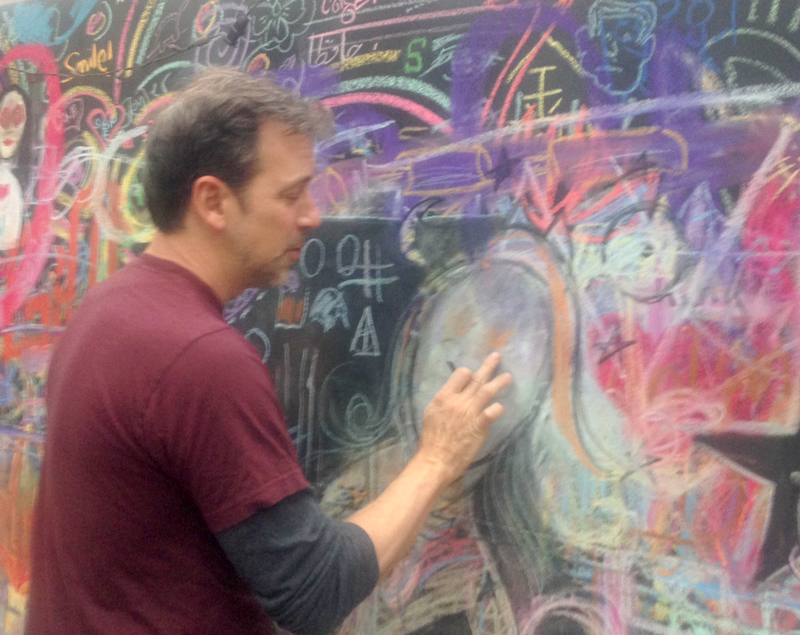
David Zinn's art is all over Ann Arbor, but you may not know it.
In addition to two PowerArt boxes recently installed at Main and William (PenPals) and at Liberty and First Ave (Selfie Monster) as part of the PowerArt Project, the Ann Arbor native is also responsible for the witty trompe l'oeil rendition of Singin' in the Rain which can be found on Fifth Avenue across from the Ann Arbor Public Library's downtown branch. And recently he was one of the artists represented at Ann Arbor Art Center's Pop-X Festival.
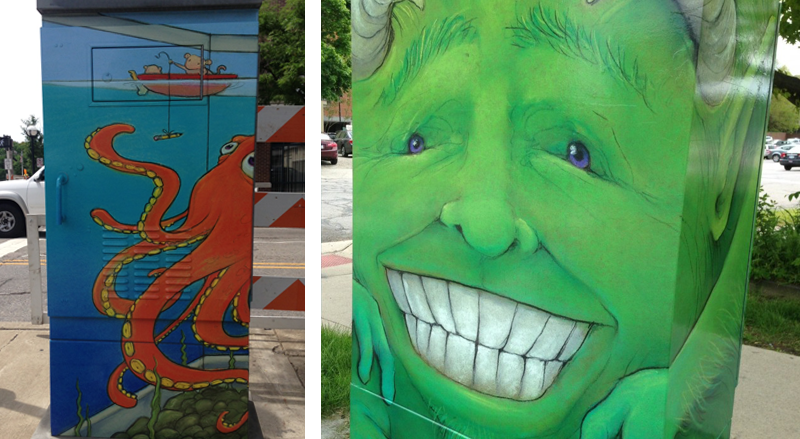
David Zinn is best known, though, as a master of comic ephemerality. He creates improvised temporary street art entirely from chalk, charcoal and found objects. His works feature fanciful creatures that pop into and out of our dimension, visitors from his wild imagination. He likes "walking around seeing places where art wants to be and putting it there."
Zinn's improbable career as a street artist began about 14 years ago as an escape from the tedium of his job as a graphic designer:
"The first day I did this, I had a really important job that I had to finish in two days, and I should have been sitting in front of my computer doing this very important job and doing all the very important things I was supposed to do. It was completely childish and irresponsible to go outside, but it was a beautiful day. The sun was out, it was 76 degrees and that does not happen here every day. And it made sitting in front of a computer seem kind of irrational."
Zinn's temporary artworks are relentlessly cheerful and entertaining. Sluggo, an amorphous blob with eyes on stalks and Philomena, a pig with wings, make frequent appearances in his temporary artworks along with a wide array of tiny monsters, valiant mice, elves and some creatures that are frankly, impossible to categorize. They bubble up out of his subconscious and dissipate just as quickly.
Zinn spends quite a bit of creative energy in subverting the status of his works as permanent art objects. He is not interested in showing his work in galleries, or in treating them as objects to venerate as high art. He values spontaneity and surprise above all.
"If it isn't going to be destroyed there's a lot I should be worrying about right now-- whether it’s good enough, whether it's serious enough. II feel bad for painters who paint conventionally on canvas, because when you finish a canvas, no matter whether you sell it, give it away or keep it in your attic, these are all things that you now have to do...but if you can't take it home, or somebody's going to eat it, or it's going to get rained on anyway, then you're free to just do what's going to make you happy now. And if you like it you can take a picture."
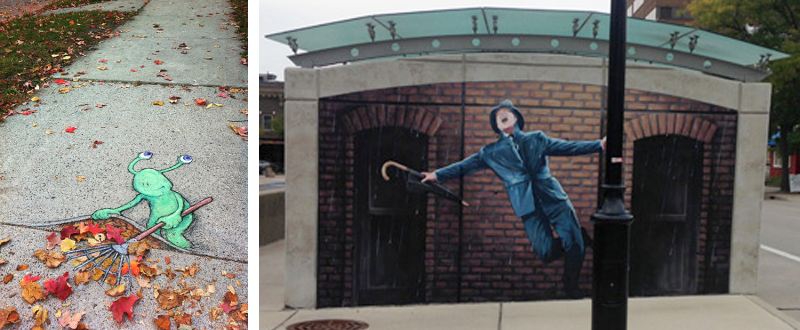
And that's exactly what David Zinn has done. He recently published a thoroughly entertaining book of his favorite temporary chalk artworks entitled Temporary Preserves. It includes not only pictures of his outdoor creations, but also photos of many of his smaller efforts made on the tables of restaurants in Ann Arbor during Michigan's cold winter months.
"The rationale for the book is that I went out on the sidewalk to get away from the computer and it was an increasingly sad irony to observe that now what I did to get away from the computer, people are sitting at the computer to look at."
K.A. Letts is an artist and art blogger. She has shown her work regionally and nationally and in 2015 won the Toledo Federation of Art Societies Purchase Award while participating in the TAAE95 Exhibit at the Toledo Museum of Art. You can find more of her work at RustbeltArts.com.
Take a walk and see the PowerArt! boxes up close and personal; a map of PowerArt! box locations is available to download. PowerArt is a partnership between the Ann Arbor Downtown Development Authority (AADDA) and the Ann Arbor Public Art Commission (AAPAC), The Arts Alliance is managing the selection and installation of artwork by local artists on power boxes throughout downtown Ann Arbor. You'll find more info about the project at the Arts Alliance website.
Preview: Ron Brooks Trio+ Remembers CJQ & More
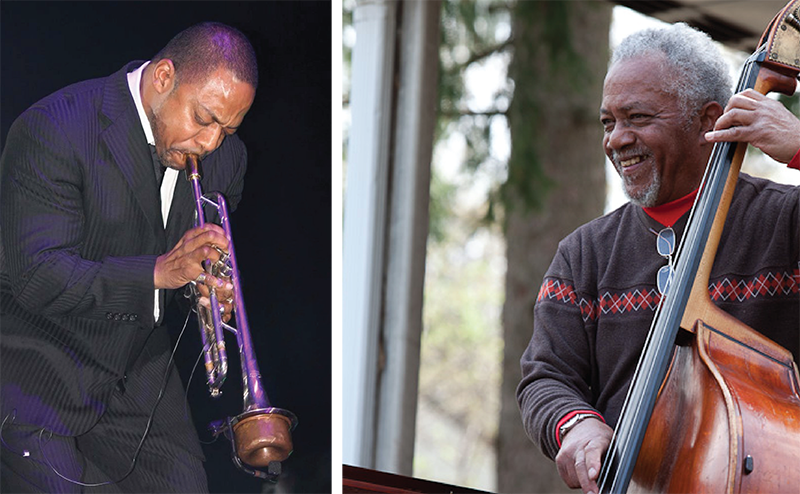
Jazz bassist Ron Brooks has held many roles as bandleader and sideman. Among them are working with famed pianists Bob James and Stanley Cowell and serving as a founding member of the legendary Contemporary Jazz Quartet/Quintet (CJQ), the Latin jazz band Mixed Bag, and of course many versions of the Ron Brooks Trio. As the owner and operator of the late lamented Bird of Paradise nightclub, Brooks performed nearly every night in Ann Arbor for over four decades.
Brooks’ performance schedule since the Bird closed its doors in 2004 has been reduced to select gigs. He spends his daytime hours as a mediator for a Jackson, MI dispute resolution center - as he has most of his adult life. But jazz fans who know him as "The Mayor" will have an opportunity to hear both the Brooks trio and a recreation of CJQ in a single performance at the Kerrytown Concert House. This is a repeat of an historic show at the recent Detroit Jazz Festival (DJF) in tribute to CJQ and DJF’s founding father, pianist/composer Kenn Cox. It will also feature the music of Brooks’ partner, Eddie Russ, along with Larry Nozero in Mixed Bag.
Beyond CJQ, Brooks is the founder and President Emeritus of the Southeastern Michigan Jazz Association. He's worked with arts and philanthropic organizations including The Jazz Alliance of Michigan (JAM). He's been one of the most prominent African-American business persons in Washtenaw County. And he's a prolific performer in his own right, backing many major jazz performers coming through town.
Some of those artists have been Tommy Flanagan, Frank Morgan, Diana Krall, David “Fathead” Newman, Shirley Horn, Kenny Burrell, Mark Murphy, Betty Carter, Sonny Stitt; and countless others, including the greater contingent of Detroit jazz players. Brooks also has the distinction of playing with the legendary Eric Dolphy prior to his untimely death in the early 1960s.
The 2016 Brooks 3 + 2 combo will include saxophonist/flutist Vincent Bowens and trumpeter Rayse Biggs, two of the more prominent Detroit based musicians. With the passing of Leon Henderson (brother of the renowned saxophonist Joe Henderson) and the iconic trumpeter Charles Moore from the CJQ, Bowens and Biggs are two of Detroit’s more capable interpreters of contemporary regional jazz.
Kenn Cox's parts will be taken by pianist Gary Schunk, while drummer Djallo Djakate Kieta has the unenviable duty of taking over for two CJQ drummers who played side-by-side - the late Bud Spangler and West Coast transplant Danny Spencer. They will play material from the recently reissued Blue Note album Introducing Kenn Cox And The Contemporary Jazz Quintet, the landmark recording that stands alongside the Miles Davis epic Bitches Brew as one of the pivotal bridge recordings between the modern acoustic mainstream and jazz rock fusion movements.
In a recent interview, Brooks remembers all the places he played over six decades - most of which are long gone. They include Mackinac Jack's; the original Canterbury House, when it was on Maynard Street; the Loma Linda; the Del Rio; The Towne Bar; Mr. Flood's Party; the Old Town Tavern; the Golden Falcon; Schwaben Hall; and the People's Ballroom. He also recalls the 1972 Ann Arbor Blues & Jazz Festival at Otis Spann Memorial field next to Huron High School where he played with the CJQ+.
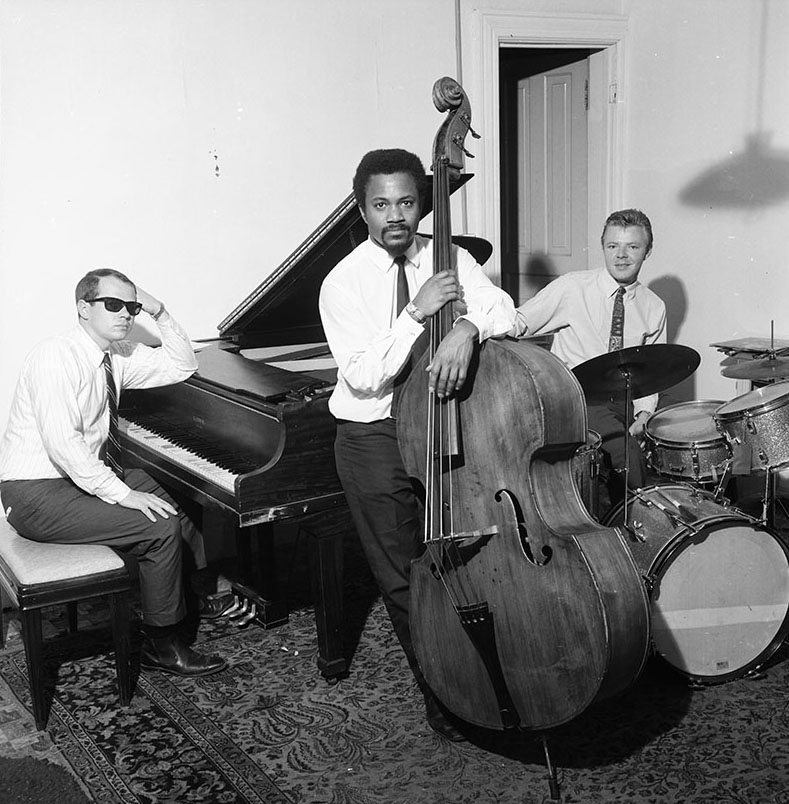
Brooks also played The Earle; the top floor Sandalwood Lounge with Mixed Bag every Sunday night; the lobby of the Ann Arbor Inn; of course The Bird; as well as more recently, The Raven's Club and Bigalora on Washtenaw Avenue.
Brooks recalls the origin of "The Mayor" moniker, bestowed upon him by the late Marcus Belgrave. “When there was the political challenge or coup of getting a liquor license,” Brooks reminisces, “during a time when they were based on the repopulation of Ann Arbor and only seven new licenses came up, I was one of several people to apply. Larry Hunter was helpful on the City Council - he was a good guy - and I was the last to get a license as there were no other minorities who had them. Marcus made a comment like, ‘Well, you're like The Mayor,’ and it stuck."
Brooks addressed why now is the right time to bring the music of Cox and Russ to the forefront. “Stanley Cowell from Toledo and Danny Spencer were my roommates,” said Brooks, “Pianists Mike Lang or Dr. Tim Tomke, drummers Bob ‘Cleve’ Pozar and Bob Elliott were there in the early days, too. We were trying to find places to demonstrate what the music was and how valuable it would be in the community. Bob James left Ann Arbor after we won the Notre Dame Intercollegiate Jazz Festival, followed by the forming of CJQ.”
Fast forwarding some fifty years later, Brooks added, “I was approached by the Detroit Jazz Festival as a surviving member of CJQ, so we put it together and pulled out a few of Kenny's old tunes and I thought it was a good idea to keep the band going if I could.
“It’s about time. The charts are sprinkled all around - [longtime RB3 drummer] George Davidson had some, [Mixed Bag percussionist] Dave Koether had some from Eddie, and the music was accessible. Barbara Cox [Kenny's widow] was very cooperative. Vincent and Rayse were aware and into it, so I was encouraged to commemorate Kenny's and Eddie's music.
“The experiences I've had were wonderful for me,” concluded Brooks. “I owe so much to music - my life and my success - to the advent of being around and exposed to these musicians who helped in my personal growth. I miss the people the most, but the quality of the music especially at The Bird was so high. What flashes in my mind was the night we had Dizzy Gillespie in town and there were two or three hundred people off the street looking through the window at his trumpet bent up in the air. That vision comes back to me often."
Michael G. Nastos is known as a veteran radio broadcaster, local, national and international music journalist, and event promoter/producer. He is a former music director and current super sub on 88.3 WCBN-FM Ann Arbor, founding member of SEMJA, the Southeastern Michigan Jazz Association, Board of Directors member of the Michigan Jazz Festival, votes in the annual Detroit Music Awards and Down Beat Magazine, NPR Music and El Intruso Critics Polls, and writes monthly for Hot House Magazine in New York City.
The Ron Brooks 3 + 2 play The Kerrytown Concert House, 415 N. Fourth Avenue this Friday, November 18 at 8 pm. For more information call (734) 769-2999 or visit http://kerrytownconcerthouse.com. They also appear at Schoolcraft College in Livonia for a SEMJA benefit at 3 pm on Sunday, November 20.
Preview: Young People's Theater presents 'Crazy For You'
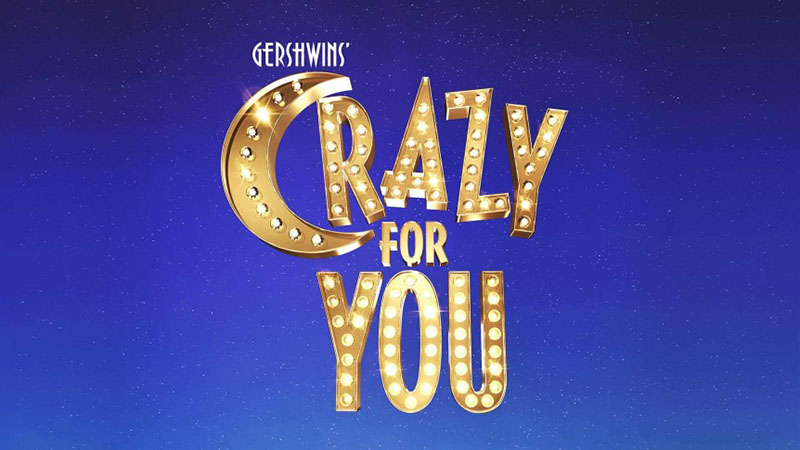
You can’t go wrong with George and Ira Gershwin, especially when you pull together some of their best material from old musicals (“Embraceable You,” “Someone to Watch Over Me,” “I Got Rhythm”) and repackage it with Fred-and-Ginger Broadway glamour, wild west shenanigans, and a wispy thin plot that demands a Mickey-and-Judy let’s-put-on-a-show production number.
Such is the case with 1992’s Crazy for You, with a book by Ken Ludwig, a romantic musical comedy based in part on the 1930 musical Girl Crazy.
The plot, such as it is, centers on Bobby Child, a wealthy Manhattan ne’er-do-well and would-be song and dance man, who ends up in a broke Nevada mining town, falls in love with the local girl, and decides to rescue its bankrupt theater. Directed by Caroline Huntoon, with music direction by Seth King-Gengler and choreography by Erika Jost, Crazy For You is an uplifting jaunt presented YPT style for audiences of all ages.
For more information, visit http://www.youngpeoplestheater.com.
Amy Cantú is a Production Librarian at the Ann Arbor District Library.
YPT’s Crazy for You runs Thursday, November 17 - 20 at the Lydia Mendelssohn Theatre, University of Michigan, 911 N. University, Ann Arbor, Michigan 48109. Tickets available through the Michigan Union Ticket Office (MUTO) by phone: 734-763-TKTS; in person at 530 S. State, Ann Arbor, MI 48109 - UM Michigan Union; or online at http://www.muto.umich.edu.
Preview: Poetry Night in Ann Arbor 11/17

The Neutral Zone in conjunction with the Helen Zell Writers Program at The University of Michigan will present Poetry Night in Ann Arbor 2016 at the Rackham Auditorium at 7 p.m. on Thursday, November 17, 2016.
This annual event celebrates words and ideas and features Ann Arbor’s spectacular youth poets sharing the stage with nationally renowned writers. This year's guest poets include:
Fatimah Asghar is a student in the Hell Zell Writer’s Program, nationally touring poet, performer, photographer, writer and thinker. Her literary work hovers between prose and poetry, examining fact through a lyrical lens. Her work has appeared in POETRY Magazine, Gulf Coast, The Paris-American, The Margins, The Offing, Word Riot, and many others. Her chapbook After was released a year ago on Yes Yes Books.
Chace “Mic Write” Morris is a poet, emcee, educator from Detroit. He is a 2013 Kresge Literary Fellow, 2-time Rustbelt Poetry Slam champion, writer-in-residence with the InsideOut Literary Arts Program & 1/4 of the Hip-Hop collective Cold Men Young. Mic has been featured on Mother Jones & The Grio, and his poetry published or forthcoming in Freezeray Press, Radius, and Muzzle Poetry Journal.
José Guadalupé Olivarez is a Chicano poet and educator. Born on the south side of Chicago, he is a graduate of Harvard University and a teaching artist for Young Chicago Authors. Jose has taught writing workshops and performed at schools, universities, and poetry slams across the country. His work has appeared or is forthcoming in Specter Magazine, The Acentos Review, The Harvard Voice, and Chicago Public Radio.
Sara Wedell is a Production Librarian at the Ann Arbor District Library.
The Neutral Zone and the Helen Zell Writers Program at U-M present Poetry Night in Ann Arbor 2016 at Rackham Auditorium, 915 E. Washington St, Ann Arbor on Thursday, November 17, 2016 at 7 pm. Tickets are $5 for students/$10 general public in advance; and $7 students/$12 general public at the door. To reserve tickets, contact Jeff Kass at eyelev21@aol.com.
Review: HERsay at Pointless Brewery & Theatre
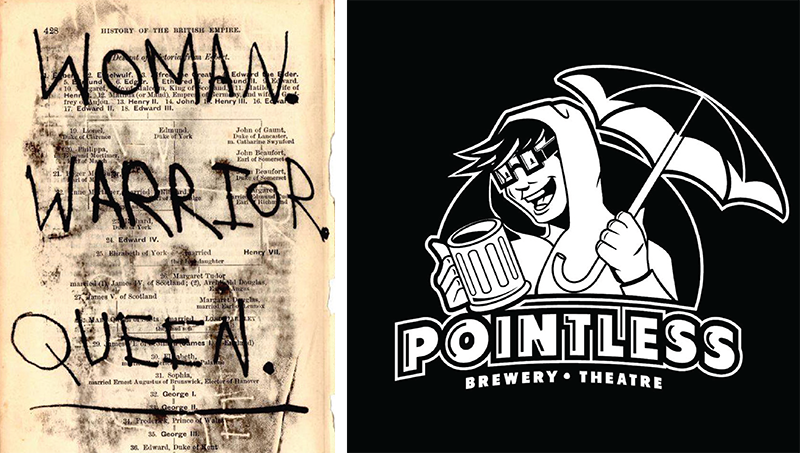
When Patti Smith emailed Pointless Brewery & Theatre Co-founder Tori Tomalia last year to find out if she could collaborate with the venue to hold HERsay there, she expected Tomalia to be skeptical, or at least questioning. But Tomalia was gung-ho for the event right away and the evening of storytelling, comedy, improvisation, theater, and visual art show’n’tell—all created and performed by women—debuted this past Thursday evening for a sold out crowd. Smith was inspired to create HERsay when she heard the story of a former SNL cast member who claimed “women can’t be funny.” She felt that women could most certainly be funny, and wanted to provide an opportunity for women to be heard with the HERsay event, which she now hopes will become an annual celebration of women and the art that they create. This year, half of the proceeds from ticket sales were donated to Planned Parenthood.
HERsay featured twenty different women performers with a range of ages, backgrounds and experience. The best part of the event was the diversity of performances and the emotional ups and downs that each performer created with their work. Jenn McKee delighted the crowd by reading excerpts from her middle school diary, in which she “got in touch with her early nihilism.”
Patricia Wheeler, local coordinator of the Ann Arbor and Detroit Moth StorySLAMs, followed McKee with a heartbreaking story of her fiancè’s suicide that left much of the audience in tears.
Artist Debra Golden displayed her gorgeous paintings of a single street in northeast Detroit, near Martin Park. The houses on the street ranged from multimillion dollar mansions (some now in disrepair) to a tiny 900-square-foot ranch at the end of the block. As Golden shared her memories of Detroit in the 1960s and 1970s, many audience members nodded along, shouting out memories of their own, of roller coasters on Boblo Island and of the Lodge slicing neighborhoods in half.
Later in the evening, Jean Leverich performed a riveting piece about a woman dying of cancer who tries marijuana for the first time in an attempt to ease her pain. She’s delighted by the experience, and Leverich’s stunning depiction of the joy and sorrow that the woman experiences was heart-wrenching.
This writer also particularly enjoyed performance poet Callie McKee, who performed two of her pieces for the HERsay audience. Her witty turns of phrase and animated stage presence were captivating. Her first piece, about preparation, left the audience smiling with the final message that there are some things we simply can’t be prepared for, no matter how hard we try. Her second—and very timely—piece dealt with a “distinctive lack of Hillary,” in the days after the election. Omnipresent in the news in recent months as she ran for president, McKee talked about her surprise after the election when she woke up and Clinton was virtually gone.
A multitude of other storytellers, comics, and artists performed at HERsay, coming together to create a warm, welcoming and positive environment for both the audience and the performers themselves. Pointless Brewery, which opened earlier this year, offered an intimate, friendly venue for the show, the only drawback being its small size—tickets sold out quickly. If the success of Thursday’s show is any indicator, Smith’s dream of HERsay becoming an annual event will surely come to fruition, perhaps on an even grander scale next year.
Elizabeth Pearce is a Library Technician at the Ann Arbor District Library who is much too mortified to revisit her own middle school diary.
Preview: Mary Gauthier at Green Wood Coffee House Saturday

Singer and songwriter Mary Gauthier will appear at the Green Wood Coffee House Saturday, playing songs from a "...heavyweight catalog she's built out of unflinching introspection and Southern Gothic-shaded storytelling.” (NPR).
Gauthier didn't begin her songwriting career until she was 35, but her backstory makes for some moving material. Born in New Orleans to a mother she never knew and left in St Vincent's Women and Infants Asylum, Gauthier was adopted at age 1, ran away from home at age 15, and spent the next several years in drug rehabilitation, halfway houses, and her 18th birthday in a jail cell. She later studied philosophy at Louisiana State University and ran a Cajun restaurant in Boston's Back Bay neighborhood for 11 years.
Gauthier's repertoire Saturday will likely include the timely "Mercy Now" from her 2005 album of the same name, a song that resonates in our current political climate:
"My church and my country could use a little mercy now
As they sink into a poisoned pit it's going to take forever to climb out
They carry the weight of the faithful who follow them down
I love my church and country, they could use some mercy now..."
Her latest album, Trouble & Love, has garnered praise from Los Angeles Times, Wall Street Journal, and Fresh Air.
Amy Cantú is a Production Librarian at the Ann Arbor District Library.
Mary Gauthier will appear Saturday, November 12 at 8:00 pm at the Greenwood Coffee House, 1001 Green Rd., Ann Arbor.
Preview: Guitarist Tackles Motian's Music & More
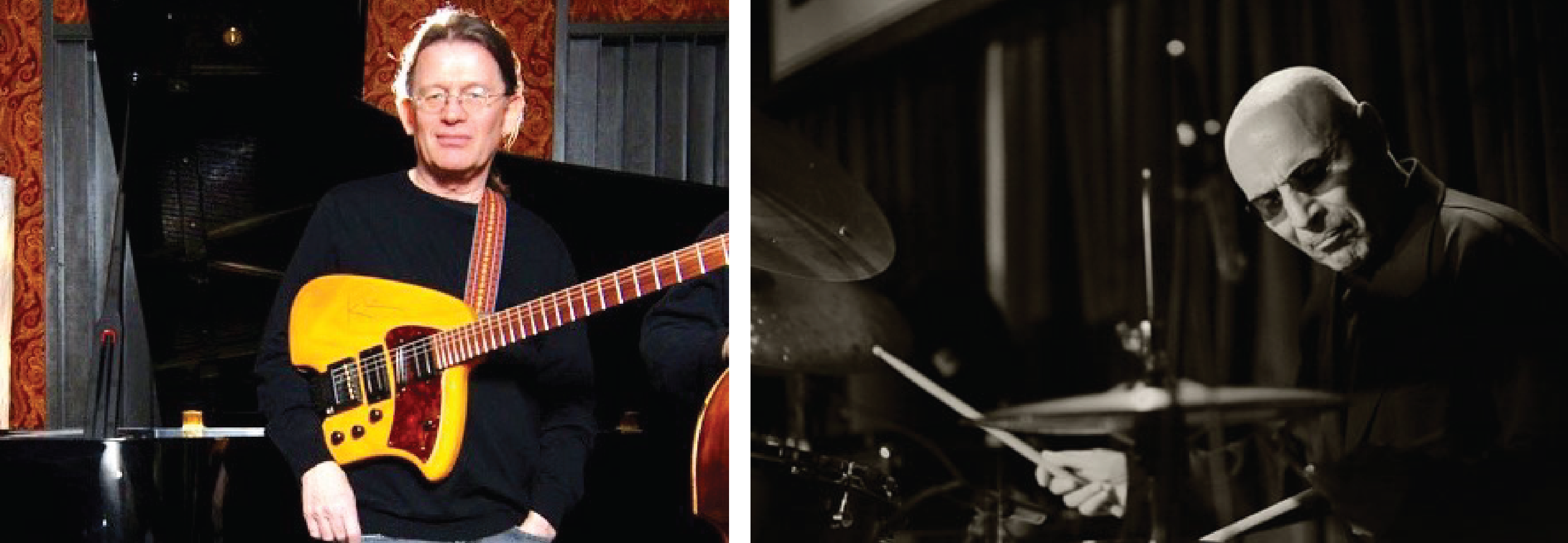
The late drummer Paul Motian was an icon not only among his fellow percussionists, but as a composer in his own right. With credits ranging from the great pianist Bill Evans’ trio and the legendary Keith Jarrett led mid-70s small ensemble, Motian became important in many ways as a mentor and unique presence in modern jazz.
Ann Arbor-based jazz guitarist Carl Michel has recognized the contributions of Paul Motian to the extent he has re-created a complete repertoire of his music. Michel also has his own substantial set list of original music and interpretations of standards, including his favorite compositions written by Chick Corea and Antonio Carlos Jobim - plenty of material to present at his live performances.
In the interim of his research and recording of Motian’s music, he has recently discovered a blog of Cindy McGuirl, Paul Motian’s niece, who is self publishing a book of his compositions. Her blog is titled “Uncle Paul’s Jazz Closet” that has podcasts of radio shows that she curates featuring her uncle’s music. She is publishing a first volume, and if there is enough interest, there will be a follow-up compendium.
Carl Michel started playing electric guitar, switching from cornet, inspired by 1960s rock and blues guitarists. A student at the West Bank School Of Music in Minneapolis, then the Berklee College Of Music, Michel moved to Austin, Texas with his brother, percussionist Robert "Booka" Michel, and became a co-founder of the Creative Opportunity Orchestra, with the innovative lead vocalist Tina Marsh. In 1983, he lived Madison, Wisconsin for a decade, settled in Detroit and then Ann Arbor, where he teaches at the Ann Arbor Music Center, and formed the Carl Michel Group, performing in the Metro Detroit area since 1995.
He has received two Emmy awards in Music Composition and Arrangement based on his work during the 16-part documentary series about 1930s-2000s pioneering female journalist for the Cleveland Plain Dealer Doris O’Donnell Beaufait titled “Cleveland.” His music is featured on film soundtracks "The Fourteenth Victim - Eliot Ness & The Torso Murders,” and “Dusk & Shadow - The Mystery Of Beverly Potts.” He has five recordings as a leader that explores contemporary jazz stylings with either a straight ahead or funky side. The 1998 Carl Michel Group and 2000 Carl Michel Group + CDs received across the board critical review acclaim and nationwide radio airplay.
Those initial CDs are a source of pride for the guitarist in that he received much unexpected praise and attention. “I do want to mention my vinyl LP from the 1980s when I was living in Madison called Food Of Love. That was a trio record. I thought it was more adventurous. When you get your first recording out, it is a sense of accomplishment. It made Cadence Magazine’s Editors Picks. When I moved to Detroit and got to know some people, did some more writing and got to know (drummer) Gerald Cleaver, (bassist) Tim Flood and (saxophonist) Michael Graye, Alex Trajano did the recording, Then I wanted to do a larger ensemble for the Group + and had a good core. So in came (saxophonist) Andrew Bishop, (trumpeter) Paul Finkbeiner and (pianist) Ellen Rowe, and did more extensive writing with more orchestration and arrangement.”
The Creative Opportunity Orchestra led him to believe his arrangements were another valuable aspect of his talent, thus his involvement with film scores. “For ‘Cleveland,’ I had a vision of the Ken Burns documentaries, and I thought I needed more music that related to the period, and I thought more of that time period. There are some elements of darkness like her covering the Sam Shepherd story, and then Doris O’Donnell’s traveling with the Cleveland Indians, unheard of for a woman at that time. And there were stories of women working in factories during World War II. There were many things to think about, but I was given free reign. I was given the synopsis of the series and I wrote themes and sent MIDI files for editing. Some of it was quartet and others were solo piano.”
As far as his connection to Paul Motian’s music, it goes back to his early interest in jazz. I got information from record stores - the first record I had was a Wes Montgomery or Milt Jackson album, then Ralph Towner and Gary Burton. I liked the ECM label and the sound. I fell into John Abercrombie and Pat Metheny pretty hard, but I found a promo copy of Dance by Paul Motian on ECM, which at first I didn’t get it but I loved the spacious sound, and there was no other drummer so unique. Then it was his project Rambler with electric guitarist Bill Frisell and got reacquainted with Keith Jarrett’s American Quartet and Quintet. But it was Paul’s Live In Tokyo that really turned the light on and I realized so much in his music - elements of Thelonious Monk, Eastern European music and Ornette Coleman coming together in his writing and it hit a peak.”
“I tried to get in touch with him, wrote to the record label - his music is not in The Real Book - and he graciously sent me 10-12 copies of his music. I got together with some people and went through this music ten years ago, There’s a lot of depth and you see how the writing is becoming stronger. Then he was not touring, only playing in New York and I went to the Village Vanguard to hear him, Bill Frisell and Joe Lovano. It was religious and mesmerizing. Then he passed away in 2011. Through the internet I was able to meet others who were interested in his music, had copies and was able to exchange music with them. I wrote his music administrator to see if I could get more, was able to, and did the recording project of which I’m proud of.”
As multi-faceted a musician as Carl Michel is, we listeners and his students are benefactors of his vision and broad experience. On the surface as laid back and less interested in image, Carl Michel is a major figure in the Ann Arbor jazz scene we all should pay closer attention to.
Michael G. Nastos is known as a veteran radio broadcaster, local, national and international music journalist, and event promoter/producer. He is a former music director and current super sub on 88.3 WCBN-FM Ann Arbor, founding member of SEMJA, the Southeastern Michigan Jazz Association, Board of Directors member of the Michigan Jazz Festival, votes in the annual Detroit Music Awards and Down Beat Magazine, NPR Music and El Intruso Critics Polls, and writes monthly for Hot House Magazine in New York City.
Carl Michel & Friends with bassist Keith Malinowski and woodwindist Paul VornHagen play The Old Town Tavern, 122 W. Liberty, Wednesday, November 16 at 8 pm. For more information call (734) 662-9291 or visit online at http://oldtownaa.com.
Preview: Skyline High School presents 'Les Miserables'

Ann Arbor's Skyline High School Theater presents Les Misérables: School Edition, beginning this weekend and running through November 20. Adapted for high school performers and produced by special arrangement with Music Theatre International (MTI), this musical adaptation of Victor Hugo's epic novel is a timeless story of human kindness, cruelty, revenge, love, and the survival of the human spirit.
“This is our most elaborate production to date,” says Anne-Marie Roberts, Skyline Department Chair for Theatre Arts. “We are so excited about staging this wonderful production that combines the drama of a pivotal time in history with an inspiring story of sacrifice, faith and love.”
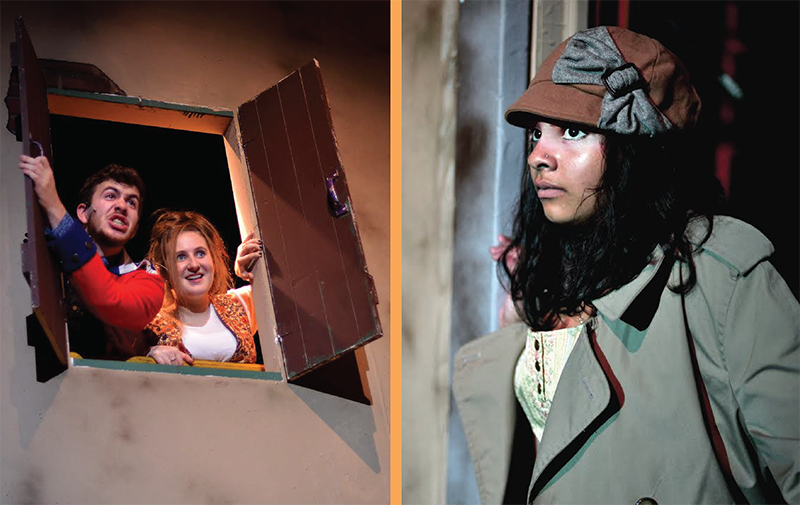
The story centers on escaped convict Jean Valjean after he breaks parole and is pursued relentlessly by police inspector Javert. Valjean is soon forced to leave his past behind in order to keep his promise to raise the orphaned Cosette, but as Javert closes in and revolution kindles the Paris Rebellion of 1832, Valjean ends up sacrificing everything to protect those he loves.
“Community support of these events is critical,” adds Roberts. “It means so much to our students to have friends, families and neighbors attend these events, and support their long hours and the hard work they have put into creating a terrific production. And ticket sales are vital to ensuring we can continue to provide our students with great opportunities to showcase their incredible talent. We hope everyone will come and “hear the people sing’.”
Amy Cantú is a Production Librarian at the Ann Arbor District Library.
Show times are November 12, 18, 19 at 7:30 pm, and November 13 and 20 at 2:30 pm. Ticket prices are $25 for VIP seats (reserved seats in the front rows with a treat); $15 for adults; and $10 for students and seniors. Tickets are available online at http://www.skylinehstheatre.org/cart and will also be available for purchase at the performances. Skyline High School is located at 2552 N Maple Rd, Ann Arbor, Michigan 48103.
Preview: Olivia Millerschin at Black Crystal Cafe

At just 21 years old, Rochester Hills-based singer-songwriter Olivia Millerschin is more prolific than many artists twice her age. She began 2016 with more than 200 concerts planned, and she says she had somewhere between 70 and 100 song ideas prepared when she went into the studio to record her excellent sophomore LP, Look Both Ways, which dropped in September.
Millerschin has expanded her local following to the national scale over the past several years, thanks to appearing as a quarter-finalist on America’s Got Talent, winning the 2014 John Lennon Songwriting Contest with her anti-romance ballad Screw Valentine’s Day, and touring internationally in support of major label artists like Teddy Geiger, Howie Day and Ryan Cabrera.
Look Both Ways follows Millerschin’s 2014 EP Over the Weather, and it’s her most accomplished record to date. Aided by guest vocalists Michael Grubbs (a.k.a. Wakey Wakey) and Sawyer Fredericks (The Voice), the 9-song set explores deeper and darker emotional territory than she has ever attempted. Musically, the record showcases not only the singer-songwriter’s keen ear for catchy hooks and clever lyrics, but also her skills as a composer. The arrangements are awash with everything from strings to synths, but every element of the production rests on Millerschin’s versatile voice and crafty melodies. Her previous accomplishments notwithstanding, Look Both Ways is sure to establish her as a major talent.
I called Millerschin, just after she wrapped up a photo shoot for Hour Detroit Magazine, to talk about her new record, her career ambitions, appearing on national television, and collaborating with high profile musicians.
Q: Having been on America’s Got Talent and having toured the country with more well known acts, in addition to performing locally, where do you feel most comfortable? Do you prefer larger audiences, or do you like playing more intimate venues?
A: I don't really know. I think a lot of people have their vision set out, and that's really great, but I've always been sort of open to everything. I've been really lucky that I've been opening for singer-songwriters who have more intimate venues that they play, and small listening rooms. I've been spoiled in that way, where I really love those. But every time I go to a big stadium concert, I really enjoy that. So I think I'm just open to making more music and reaching as many people as I can.
Q: You put college at bay to pursue music full-time. I'm curious about what your thought process was there, and if you had any fear or reluctance about making that decision.
A: I went to music school for a year and I really enjoyed it, but I found that I was learning more just studying on my own than I was in my classes. I kept having to turn down touring and other opportunities, so I decided to take the year off. I was really worried about it. I was hoping to make it a sustainable career, and I said, "I'll go back if it doesn't work out." You always worry about disappointing your family and your friends, but I took the year off and it's been nonstop ever since. So I'm very lucky that way.
Q: You also had to put off touring for a bit when you were on America's Got Talent. How did that make you feel?
A: That was weird because I love playing live more than anything. That's just where you get to connect with people in general, and you get to grow as an artist. America's Got Talent is a completely different experience than anything I've ever been a part of. It was good from the exposure standpoint, but it definitely held us back in the other aspects of our career.
Q: What did you take away from that experience?
A: It definitely made me see more of the business side of the industry, because I had always dealt with people who are just in it for the music. I was a teenager, so it opened my eyes to people who see it as a business and see you as a business, and it just made me more aware of everybody, I guess.
Q: You seem to work well under pressure, and you often put yourself in challenging situations. Where does that drive come from?
A: I feel like I was a lot better at it when I was younger, because I just like, "I'm gonna stand up on the stage and sing my songs for people. No big deal!" I didn't realize what I was actually doing. It depends on the situation. Sometimes I'm like, "I can handle this." It's just a matter of convincing yourself that you can do something, because the insecurities are what eats me alive. I've always wanted to one-up my previous accomplishment.
Q: Your new album has a very polished sound, but it also sounds strikingly intimate. How did you achieve that balance?
A: It kind of goes all over the map. I kind of write more about other people's experiences than my own. I just think it's easier to be subjective that way. I know a lot of artists write singles so they can pitch them for radio, and I've never thought about that. It's very smart as far as marketing, but my writing's always been whatever I'm seeing around me at the time. I had probably 70 to 100 songs ready for the record, and I showed them to the producers, and they liked those songs the best.
Q: Tell me about the process of recording this album. I know you did most of it in New York. How did that differ from the way you've recorded in the past?
A: My first record was self-produced in one of my friends’ studios. That was very hands-on. We were super young. I think I was 15 or 16 at the time. So we were just kind of experimenting. And the second one I didn't really have much of a hand in. This one I collaborated with two producers out of New York, and I got to really be a part of the whole process. It was my music, but I got to control where the sound went. We did one song in Detroit too, but I think it sewed the whole thing up when I was open to what they were saying, and when I could throw in, "Oh, let's keep this aspect a little more settled down."
Q: Do you have any plans to move to a bigger city to be closer to the music industry?
A: I'm living with my parents right now. I'm trying to save up to get a house or something around here. I thought about moving out to New York because when I was working on the record I was living out there, but it just doesn't make sense, and I just like Michigan so much.
Q: You have two well known guests on the album: Michael Grubbs and Sawyer Fredericks. How did you meet them and get them in the studio to sing with you?
A: Michael Grubbs is a really phenomenal songwriter. His band is Wakey Wakey. He was one of the two producers that produced the record. The song that I have him on I originally just wrote for a solo song, and he was singing some backups and I was like, "Do you want to be featured on this one?" He was really happy to do that.
Sawyer I met through a project I did for Mitch Albom. Sawyer and I are both on the soundtrack for one of Mitch's books [The Magic Strings of Frankie Presto], and we just kind of kept in touch lightly. I had this song that I really imagined a couple different voices on, but especially his. So I reached out to him, and I didn't really know what he would say, and he was like, "Absolutely!" He drove into New York, and we worked on it. I'm just really lucky [laughs].
Q: How did you come to work with Mitch Albom?
A: It came about when I was on America's Got Talent, or maybe a little before then. I was promoting a couple of different things, and I went on his radio show. I don't know how it happened, but he somehow decided that he liked me. He's been nothing but incredible. Ever since then, every time he's got a project or he's producing a movie, he'll call me and have me do something for it. He had this soundtrack for his book, and it was all these huge artists. They had Ingrid Michaelson on it, they had Tony Bennett on it. He asked me if I could just be, like, his local artist on the CD, so I did.
Q: Turning back to your new record, Long Weekend is the obvious single, but it also seems like the emotional center of the album. Where were you coming from when you wrote that?
A: That was my favorite one off the record, which is saying a lot [laughs]. Most of my music in the past has been upbeat, and part of that's just age. Of course songs I write when I'm 14 are going to be different from songs I write when I'm 20. I wrote that song not only about personal experience, but just about everybody. I think everybody has that one person that they think is going to be the one, and then they get away or something like that. That one was really tough to write. I wrote most of it in the studio, because I showed the guys the chorus of it. That was all I had written, and they were like, "You have to finish that one!" So I kind of rushed the process, but I really like that one.
Q: The record sounds very cohesive, both thematically and sonically. Was there any kind of overarching theme or concept you wanted to express?
A: I think the whole point of this record is perspective, and being able to find some good in something that's seemingly bad, or even just understanding and coming to terms with the bad. The older I've gotten, like anybody, I've experienced more not only heartbreak, but just real life experiences, and death and loss. So I felt like that stuff needed to be talked about, but it didn't necessarily need to be mourned. It needed to be discussed in a way that people could understand and relate to.
Q: What are your plans for the rest of the year, now that this record is out?
A: I'm doing some promotion for the record. I'm hoping to get it in movies and TV. I'm doing a ton of touring this year, so I haven't had much time to be writing a new record. But I'm ready to do that. After two months of living with this one, I'm like, "Oh, why not start a new one" [laughs].
Steven Sonoras is a writer living in Ypsilanti.
Olivia Millerschin and her full band perform at 7:30 p.m. Friday, December 2 at the Black Crystal Cafe, 3653 Santa Fe Trail. The show is private to registered guests. Tickets are $25, which includes complimentary hors d’oeuvres and beverages.


































